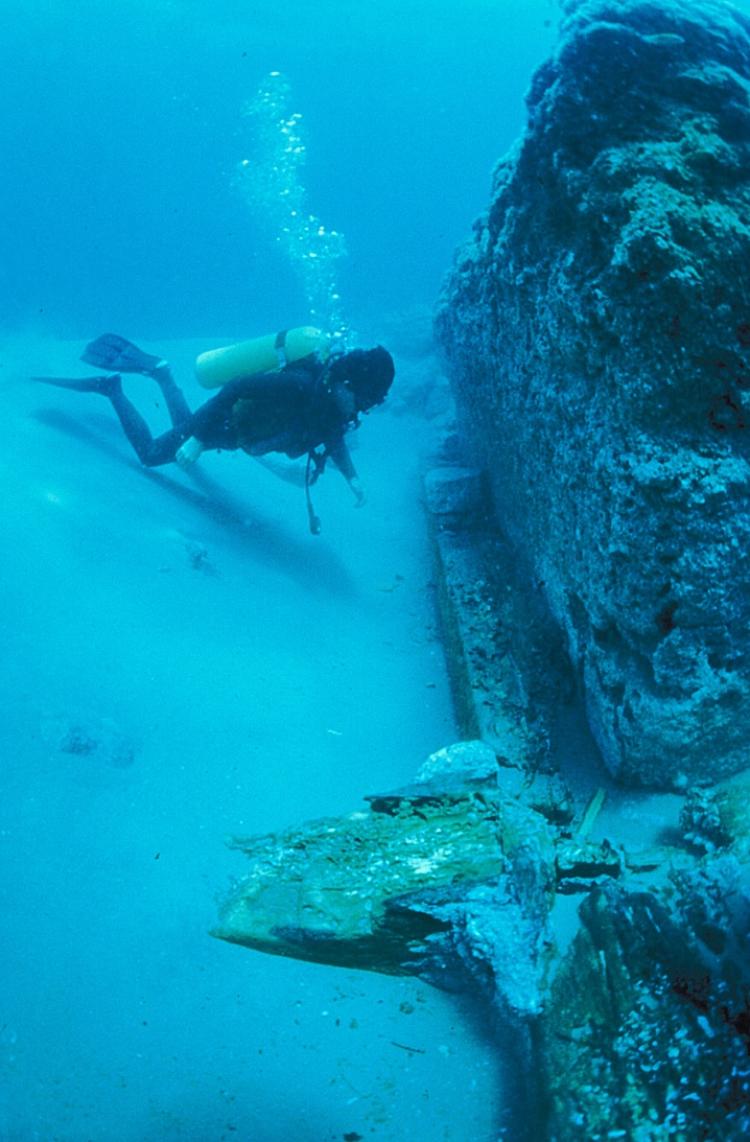A Lesson from the Past?
Marine concrete from the Roman empire has proven to stand the test of time—and offers insights into ways to combat rising sea levels now
Throughout the Mediterranean Sea, scores of ancient marine concrete monuments, once components of artificial harbors constructed by Roman builders as part of their vast imperial maritime infrastructure, have survived for two millennia and counting.
Modern marine concrete usually survives in the sea for little more than 50 years and sometimes even less. What did Roman builders know that modern harbor engineers did not? This was one of the questions that the Roman Maritime Concrete Study, an international, multidisciplinary project that I organized and co-directed in the first decade of this century, hoped to answer.
Field work was undertaken to collect and analyze concrete cores extracted from submerged structures at various ancient harbor sites in Greece, Italy, Cyprus, Israel and Egypt. The results of this study were published in Building for Eternity: The History and Technology of Roman Concrete Engineering in the Sea in 2014 with a reprint in 2021.

At the top of the page: The last stages of the reproduction of a small marine concrete block using the same materials from the Bay of Naples in the harbor of Brindisi, Italy. Above: A massive concrete block, c. 15x11x4 m, discovered in the harbor of Caesarea Maritima, Israel.
The key ingredient responsible for the amazing durability of Roman marine concrete was volcanic ash or sand from the Bay of Naples, called pulvis puteolanus. It was the binding element in the mortar that, along with aggregate, comprised the concrete itself.
This Neapolitan volcanic ash has a unique chemical composition. When it was mixed with quick lime and seawater, to which rock aggregate was added, the resulting concrete could be placed while still in a liquid state into the sea within a variety of wooden formworks to set quickly and then cure over time. The internal chemical processes that occurred as the concrete cured underwater eventually reduced the porosity of the surface of the concrete block until it became like rock itself. Some scientists have claimed that Roman marine concrete is the most durable substance yet created by humankind.
Obviously, there is not enough volcanic ash in the Bay of Naples region to meet the demands of today’s world. However, material scientists throughout the world are using the data published in Building for Eternity as a starting point in efforts to recreate the chemical processes that occurred in Roman marine concrete that made it so durable—which could become even more important as sea levels rise in response to a warming climate.
NOAA scientists have predicted a sea level rise of at least 2 meters by the end of this century, and this might be a conservative estimate. If this prediction is close to being accurate, all of our coastal cities are at risk of flooding. There will be mass migration of our coastal populations to places like Colorado. But, if a new form of concrete could be used to build durable, long-lived seawalls at critical locations, say along the shores of Manhattan, perhaps our coastal cities might be able to survive.
Such seawalls, of course, would be only one part of future efforts to mitigate the sea level increase that threatens our future.
In addition, perhaps new marine concrete containers that, over time would become indistinguishable from rock itself, might provide one answer to how society safely stores nuclear waste and spent nuclear fuel. On-site steel and concrete barrels, now used as storage containers in scores of locations scattered around our country, are not the answer, since they eventually will leak. New containers made of this impervious marine concrete might well prove to be better receptacles.
After hazardous nuclear material was emplaced, they could then be shipped safely to the Yucca Mountain Nuclear Waste Repository (YMNWR) to be stored in the caverns in this mountain. If so, we would have gone a long way to solving the issue of nuclear waste storage or disposal for perhaps the million years that was the hoped-for goal for the YMNWR. Moreover, there would be little possibility of leakage into nearby aquifers during these millennia.
As I often said to students in my classes, the ancients keep stealing our good ideas. When it comes to improving our marine concrete, we may learn a lesson from the distant past.

